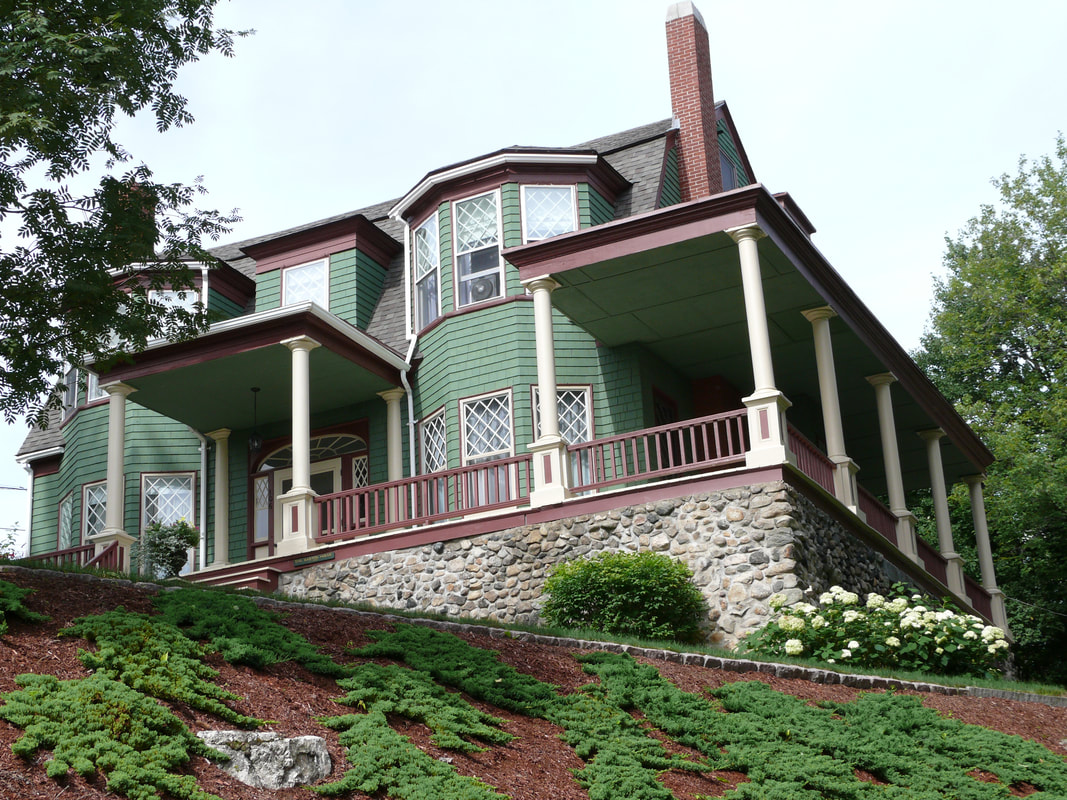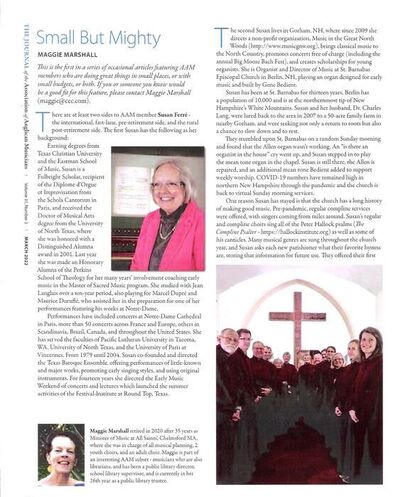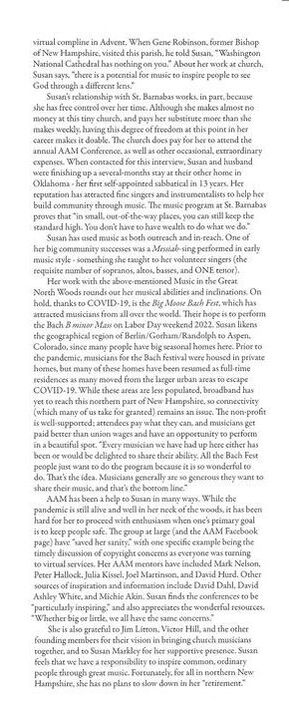|
In October of 2021, I was invited by Maggie Marshall representing a committee of the Association of Anglican Musicians to answer a few questions about my involvement with AAM and, more precisely, my involvement with the small Episcopal Church I've served for the last 12 years, in Berlin, NH, "The City Trees Built." Berlin's history tells a remarkable, colorful story of the largest and first paper mill in the U.S., the invention of Crisco, car air fresheners in the shape of Christmas trees, paper towels called Nibroc (Corbin backwards..."her nibs"), improvements in voltaic batteries, early production and use of electricity, the making of Converse shoes, the moniker "hockey town," and a famous ski jump, to name a bit of history which made Berlin famous and wealthy enough to boast a symphony orchestra, jazz band, and community chorus of 100+ singers. By the time we arrived in 2007, the city had shrunk from a population of 20,000 to around 8,000 souls. The paper mill smoke stacks, which had given us in Gorham "the smell of money" when the north winds blew, had been purchased first by Canadians, then by the Chinese, who closed it down. The stacks were blown up. The significant event was covered live on NPR. We attended this sad sight, in the rain. Locals rejoiced as several of the stacks refused to fall. The rest was sold for scrap. Eventually, the stacks would give way to what is now a bio-mass plant which takes what is left of the forest floor, shreds it, and sells it for fuel. When we first visited St. Barnabas Episcopal Church on Christmas Eve, 2008, I was reminded that our Great Aunt Babe and Great Uncle Bill Nickerson had worshiped there, and were still remembered in the Book of Remembrance. It was from there that the church's beloved priest, Father Hodder, had taken his active youth group to a camp built on what is now our Tree Farm, and crossing Route 2 in front of our house on Gorham Hill, was tragically hit by an oncoming car and was killed. His daughter, Peggy Hodder, now in her 90's, still keeps in touch. My mother had been reared Episcopalian, and remained so until she met our father, a fiery and effective Swedish Free Church preacher. St. Barnabas was located a block down a steep hill from our home on Prospect Street, once an important historic, Victorian structure built in the 1890's which had housed important figures in Berlin's history. We could walk easily to the church from there. We have since moved to Randolph, a mere 10 miles away from Berlin, into our new home located near the family home on Gorham Hill, the old Nickerson Farm. The 48 acres of what used to be farmland are currently preserved in Tree Farm status, and a large solar array we installed a few years ago overlooks the Mineral Spring Road and Tree Farm. Against this backdrop, I addressed Maggie's questions. Not every story in the article is exactly true. We first visited on Christmas Eve. It was when we returned on a snowy Sunday in January that I was asked to play, at the last minute, the Allen electronic, because the organist was not able to drive there in the storm . It was a short time later that I accepted the position after my predecessor had to resign for health reasons. We moved our Renaissance-inspired Bedient pipe organ into the sanctuary in 2009, along with several other instruments, and it was at that time that the Bishop, the Right Reverend Gene Robinson, came to dedicate the organ. Instead of preaching a sermon, he deferred to me to play Bach, which I did, happily. Reference: Pages 10-11 of The Journal of the Association of Anglican Musicians, Vol 31, No 3 |
Susan FerréGood Times Book Archives
June 2022
Categories
All
|



 RSS Feed
RSS Feed
